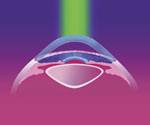 Have you been told LASIK is not right for you?
Have you been told LASIK is not right for you?
People involved in contact sports, those with dry eyes and those with thin corneas should know about Advanced Surface Ablation, (ASA). It is a laser vision alternative for the treatment of nearsightedness, farsightedness and astigmatism.
How Advanced Surface Ablation is Different
ASA offers additional safety. In LASIK, a microkeratome (oscillating blade) or Intrase Laser is used to create a corneal flap. This gives the eye surgeon access to the deeper tissue where treatment is done. After the laser work is finished the flap is replaced and typically heals without incident.
In ASA there is no flap. Instead, a small portion of corneal epithelial (surface) cells is gently polished away with a diluted alcohol solution. Laser reshaping is completed in the same way as for LASIK surgery. Since no flap was created, a bandage contact lens is applied to the treated area for protection. It is worn for several weeks while the corneal surface cells regrow.
Pros and Cons of Advanced Surface Ablation
The recovery period for ASA is longer because of the necessary cell regrowth. For some patients it is a bit more uncomfortable than with LASIK. However, ASA avoids all the potential complications of flap creation:
- Formation of flap wrinkles during healing
- Infection under the flap
- A flap that is too deeply cut
- In incomplete flap which must be redone
Things that must be avoided after LASIK, such as bumping or rubbing your eyes, are not such an issue after ASA. Most importantly, there is less potential for dry eye. That is because cutting a LASIK flap also cuts some nerves connected to the lacrimal (tear-producing) glands. Until they regrow, the glands produce little or no tears. With no flap, ASA protects you from that side effect.
ASA Corrects Common Vision Problems
In nearsightedness, the cornea is too steep. Advanced Surface Ablation flattens it slightly by removing corneal tissue from the corneal center. This enables the cornea to focus light directly on the retina, instead of in front of it.
In farsightedness, the cornea is too flat. ASA steepens it slightly by removing corneal tissue from the cornea's outside central optic zone. This allows the cornea to focus light directly on the retina, instead of behind it.
In astigmatism, the cornea is oval-shaped like a football. This shape creates two focal points that produce the blurry vision typical of astigmatism. ASA makes the corneal shape more spherical, creating a single focus point directly on the retina. Astigmatism can be treated along with nearsightedness or farsightedness.
Good candidates for Advanced Surface Ablation
Good candidates:
- Wish to reduce or eliminate dependence on eyeglasses or contacts
- Are beyond 18 years of age
- Have enjoyed a stable eye prescription for one year or more
- Have no chronic health issues affecting their eyes
- Have wider pupils than average
- Have thin corneas inappropriate for LASIK
- Wish to avoid typical LASIK flap complications
- Wish to minimize dry eye problems following laser vision correction surgery
- Cannot have LASIK because of glaucoma, other eye pressure problems or corneal dystrophy
- Do not want a microkeratome used during their laser vision correction
ASA offers an excellent opportunity for many more people to enjoy laser vision correction. However, it is still a surgery and involves some risks, although they are extremely rare:
- A dry feeling
- Glare
- Nighttime halos


Closed for lunch from 1:00 - 2:00 pm